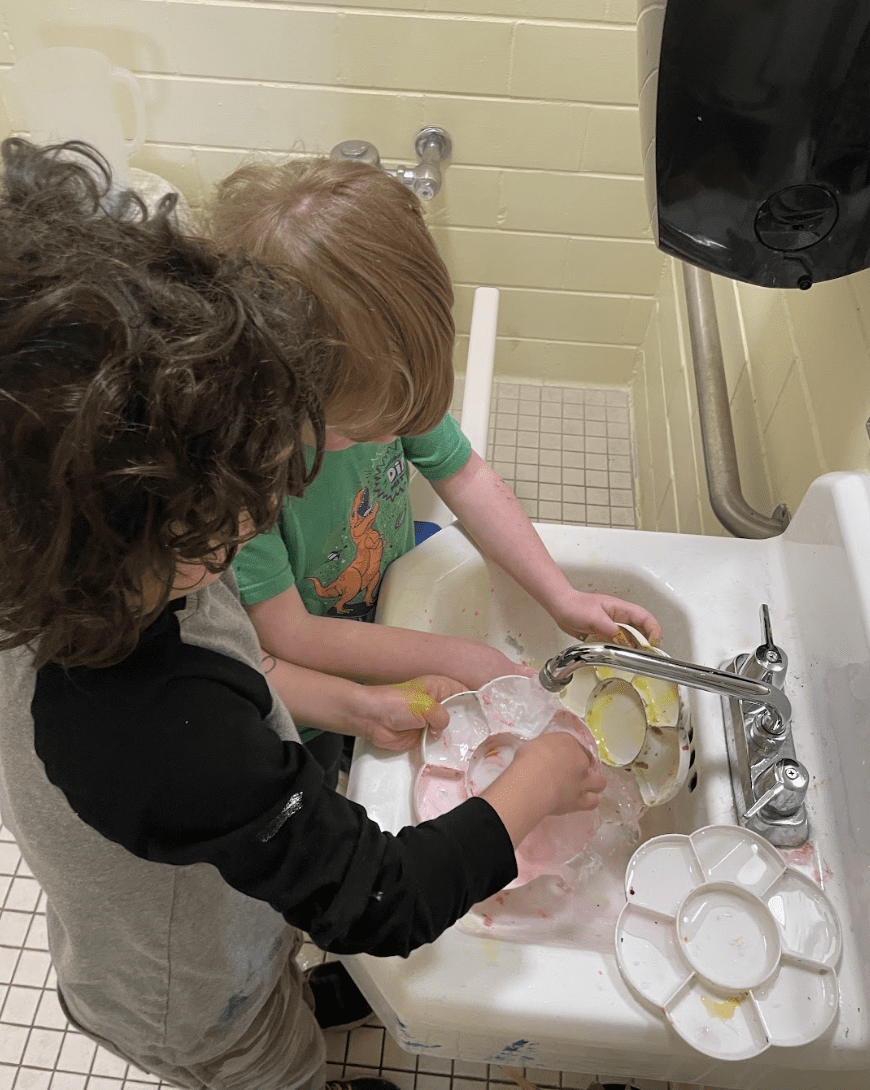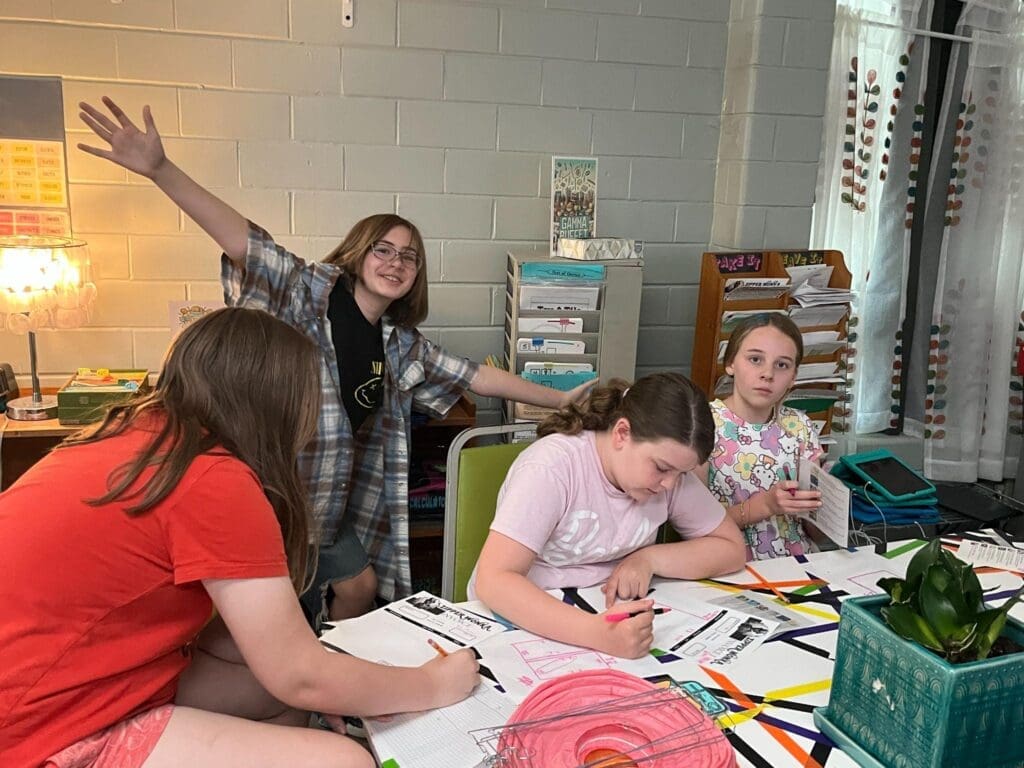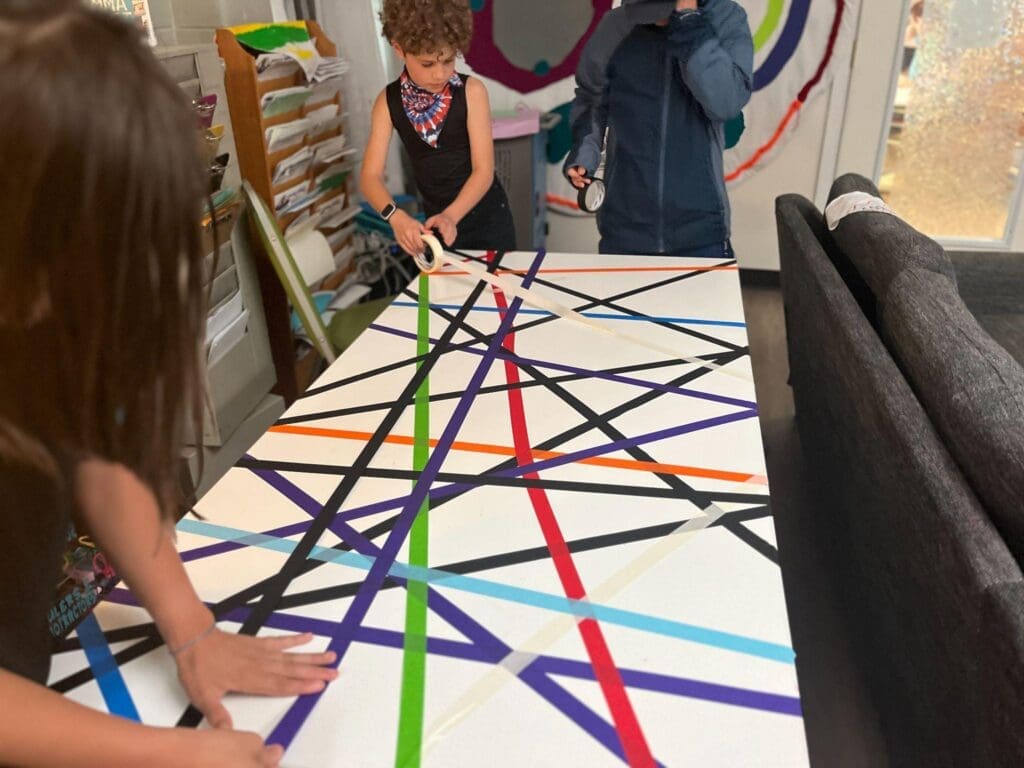Oceans
This week we dove deeper into the ocean – 600 feet down to the beginning of the Disphotic or Twilight zone. Very little light reaches this deep. Disphotic gets its name from being a region where photosynthesis cannot occur and plants can’t grow. To understand the differences between the two zones for the living organisms that live there we looked at sperm whales and giant squid. Alphas learned that Sperm whales are incredibly unique mammals. In some form of evolution they have been on earth 20 million years or more, can dive the deepest of any mammal (2,000-10,000 feet), hold their breath the longest (1 hour), have the largest brain and nose, echolocate, AND can make booming sounds up to 260 decibels (just to put that into perspective a rocket launch is in the 204 decibel range and human eardrums rupture around 156!). Scientists are beginning to record their communications and some believe their communications may be more complex than our own. Their favorite food is giant squid which they have to dive for deep into the twilight zone.
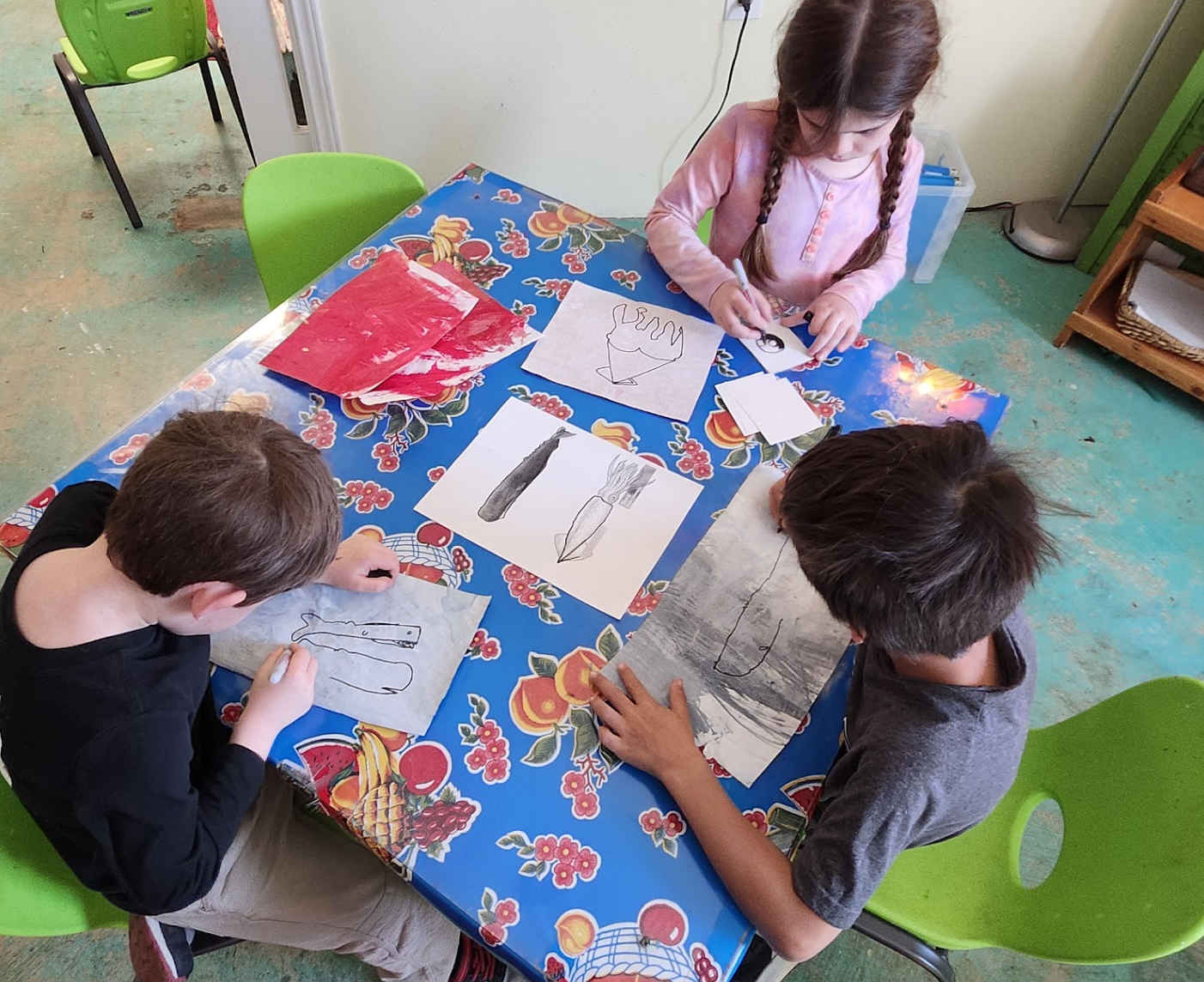
Giant squid are a creature of the Twilight zone and very little is known of them. What we have been able to study are dead ones that land on beaches or indigestible parts that are found in the stomachs of sperm whales. They have 8 arms and 2 feeding tentacles. They don’t like to see Sperm whales come after them and they fight them in which many believe to be epic battles (as is seen on the sucker and lash scars on sperm whales). Because this happens so deep there has never been an actual recording…but here’s a simulation we watched about how the hunt begins…Sperm whale hunt. To reflect on this undersea drama, we created our own Sperm whale vs Giant Squid illustrations….
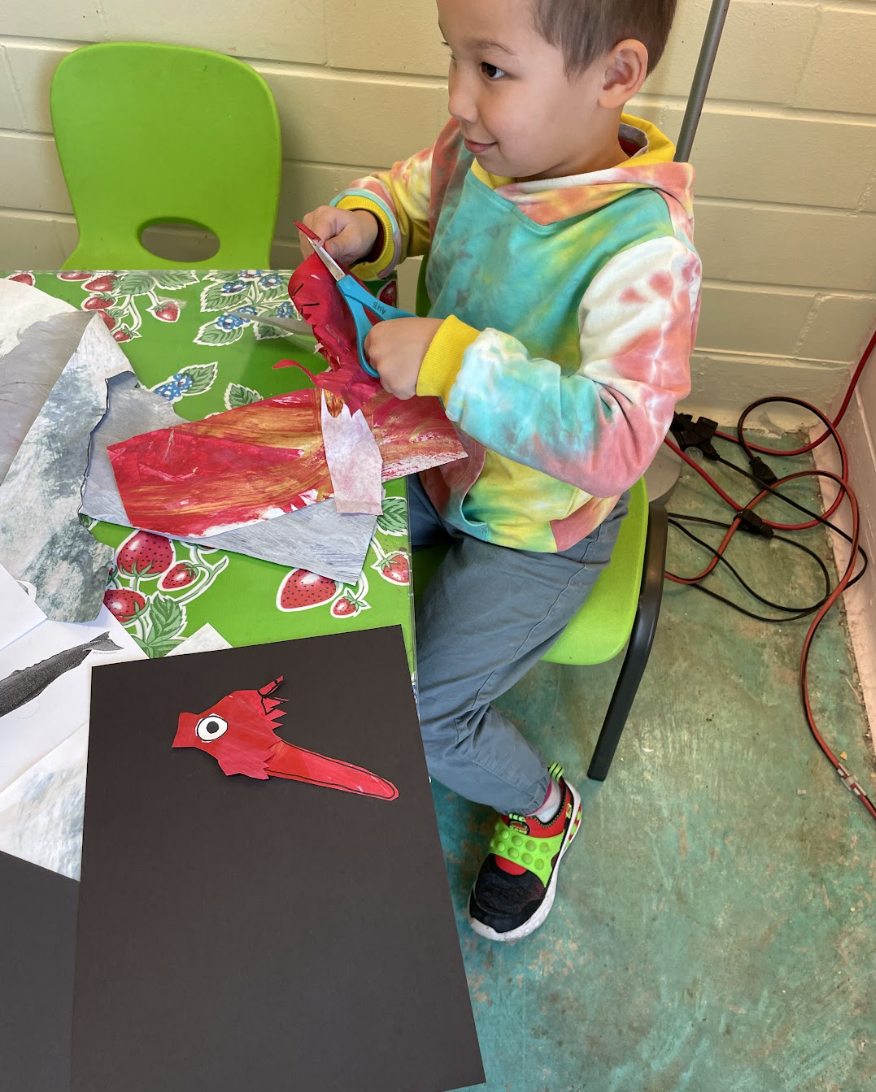

We also learned that in World War 2 when sonar was being developed and used scientists noted that the seafloor made a dramatic up and down motion twice a day. Turns out it wasn’t the sea floor at all! They discovered for the first time that the largest migration on earth was happening as billions of Twilight animals moved up into the euphotic zone to feed and then descended 12 hours later back into the depths. The nautilus, one of earth’s “living fossils”, are of the cephalopod family. They are one of the creatures that makes this journey every night. Imagine running a marathon up to a feeding ground and running it again to get home – that’s what these creatures essentially do to get food. To appreciate the unique and beautiful qualities of the nautilus we experimented with drawing and watercolor techniques. They’ll be available for viewing in our Ocean Zones diorama.
Migration and nautilus
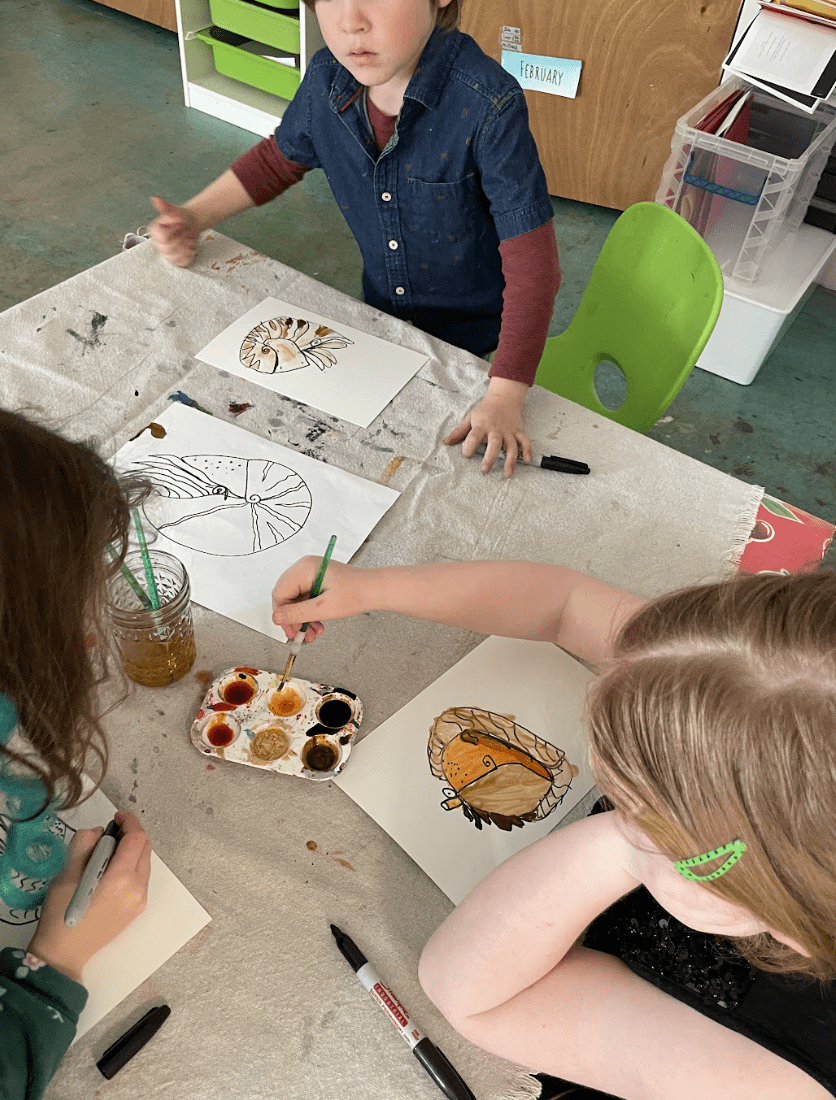
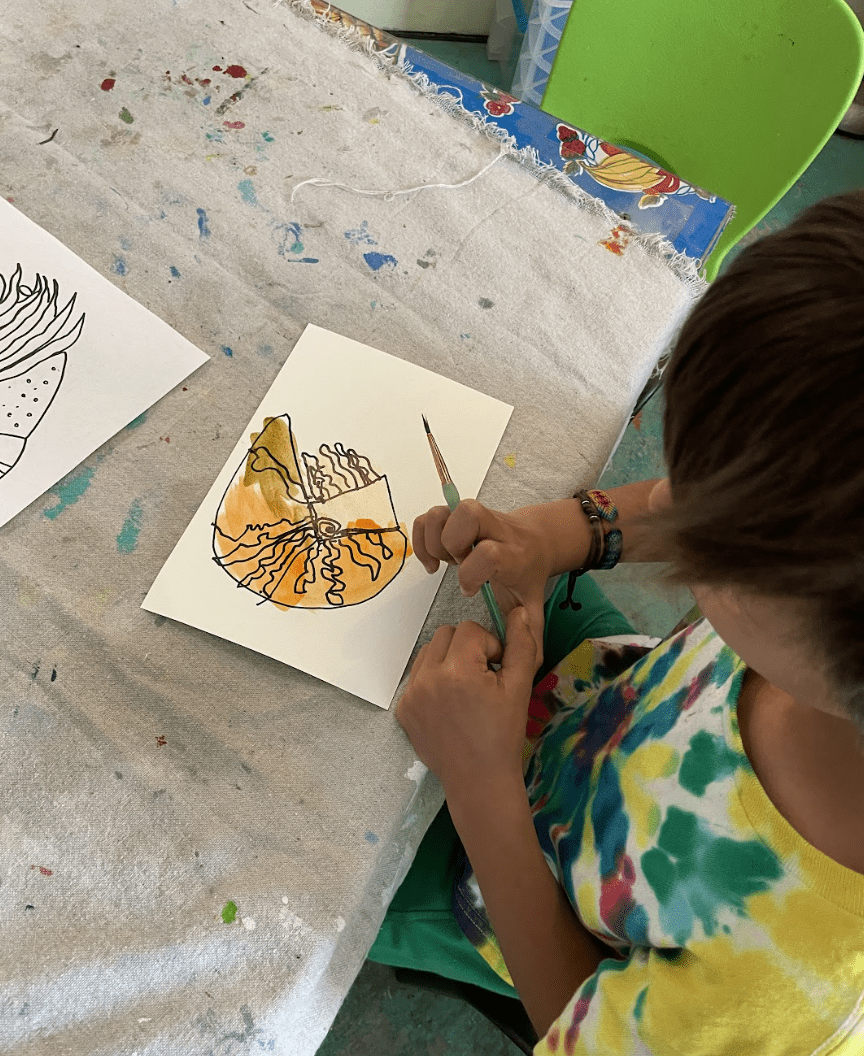
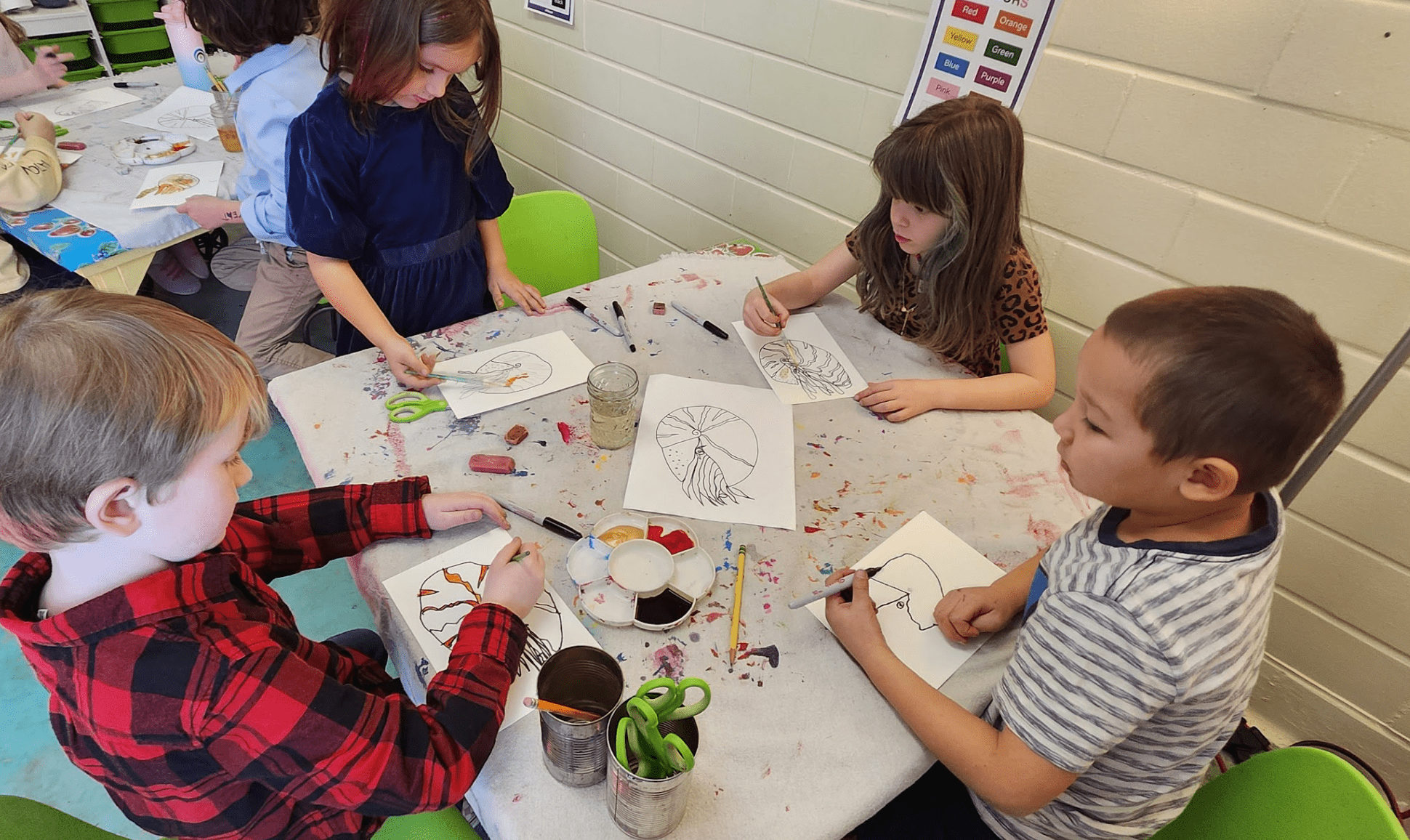
Another incredible quality that many Twilight zone creatures have is the ability to create bioluminescence in their bodies. We oohed and ahhed at their pulsating and flashing lights that they use to defend, mate, camouflage and capture.
We created blood belly jelly fish, salps, vampire squid, ghost fish, and siphonophores to name a few. One of the most significant things we learned this week is how these creatures, by eating plankton and fish from the euphotic zone, remove carbon that euphotic zone animals and plants have captured and take it to the depths of the ocean. The ocean keeps the land healthy. It is the motherboard of our beautiful earth.
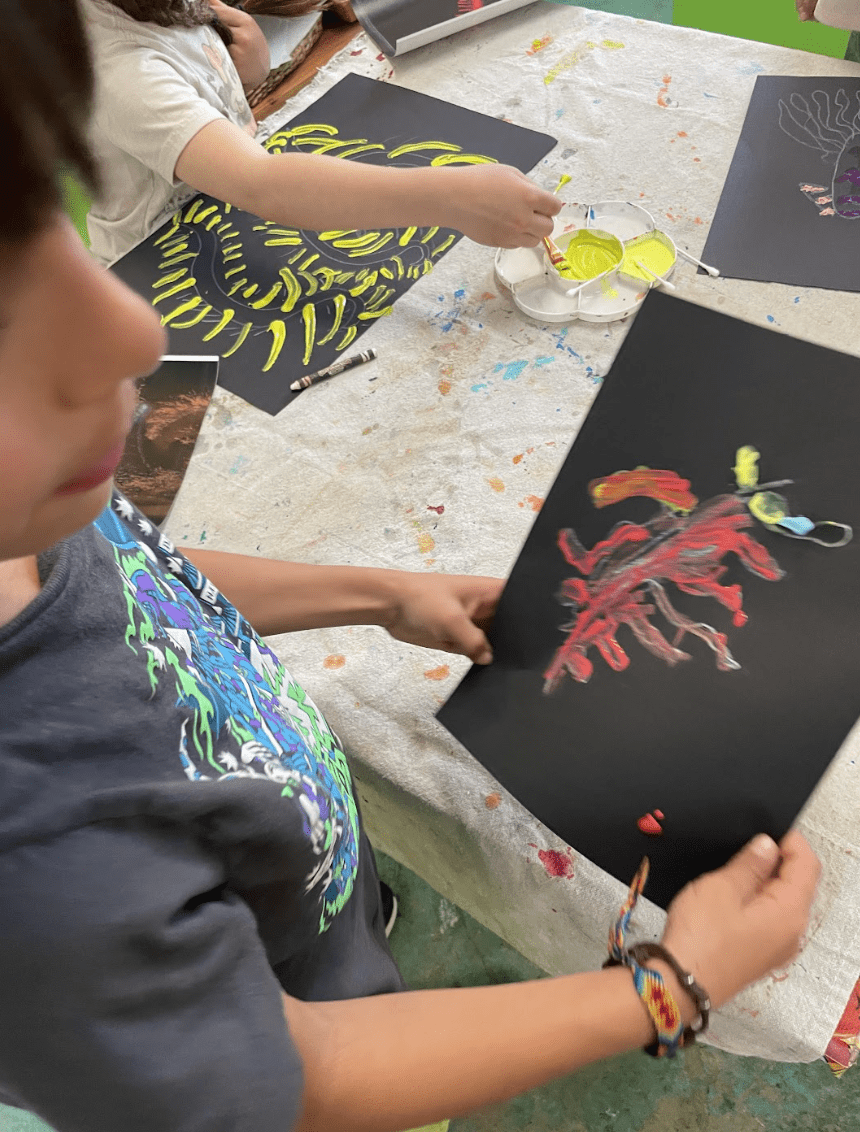
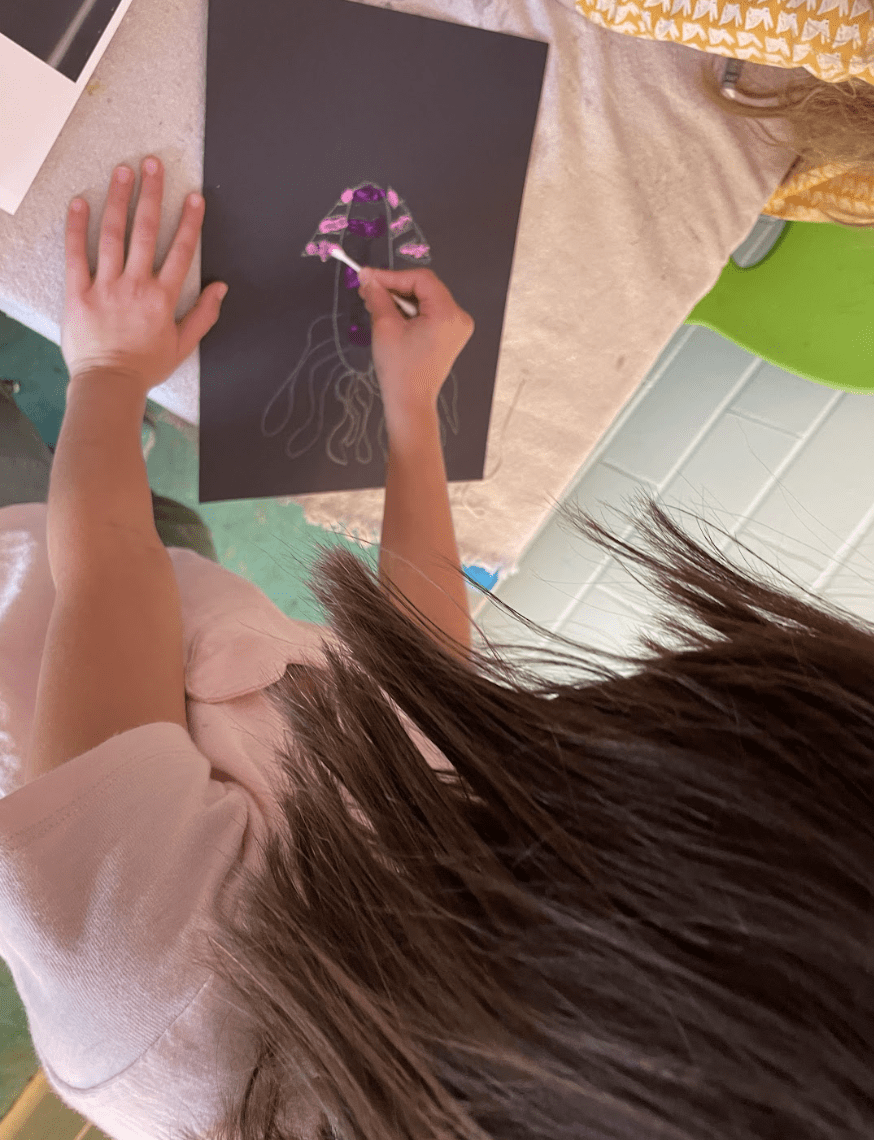

Sharing our euphotic zone creatures
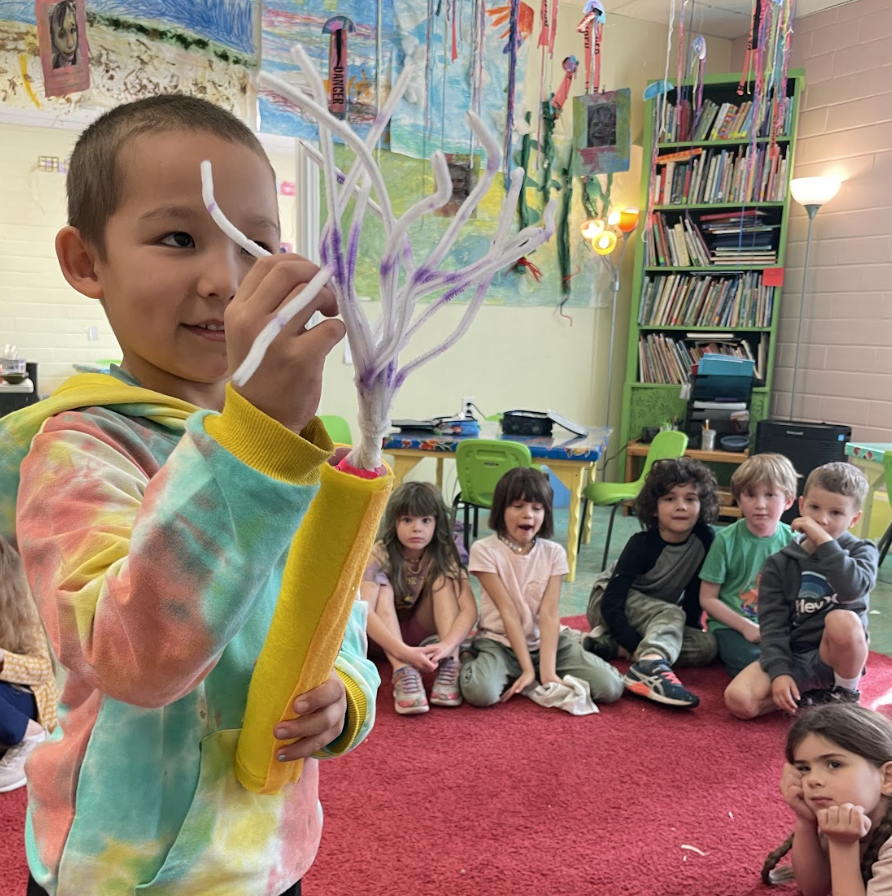
Feather duster worm
Seals
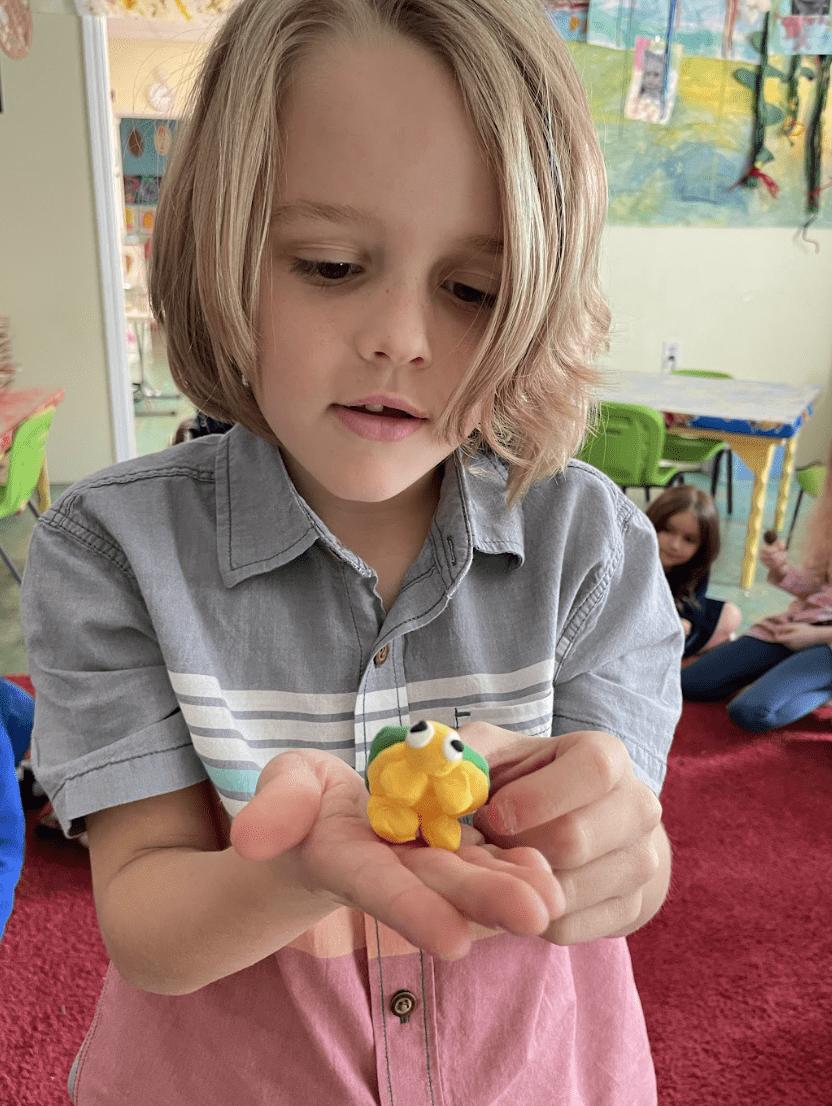
Sea turtle
Blue shark

Coral reef
Painting our team project euphotic zone fish…
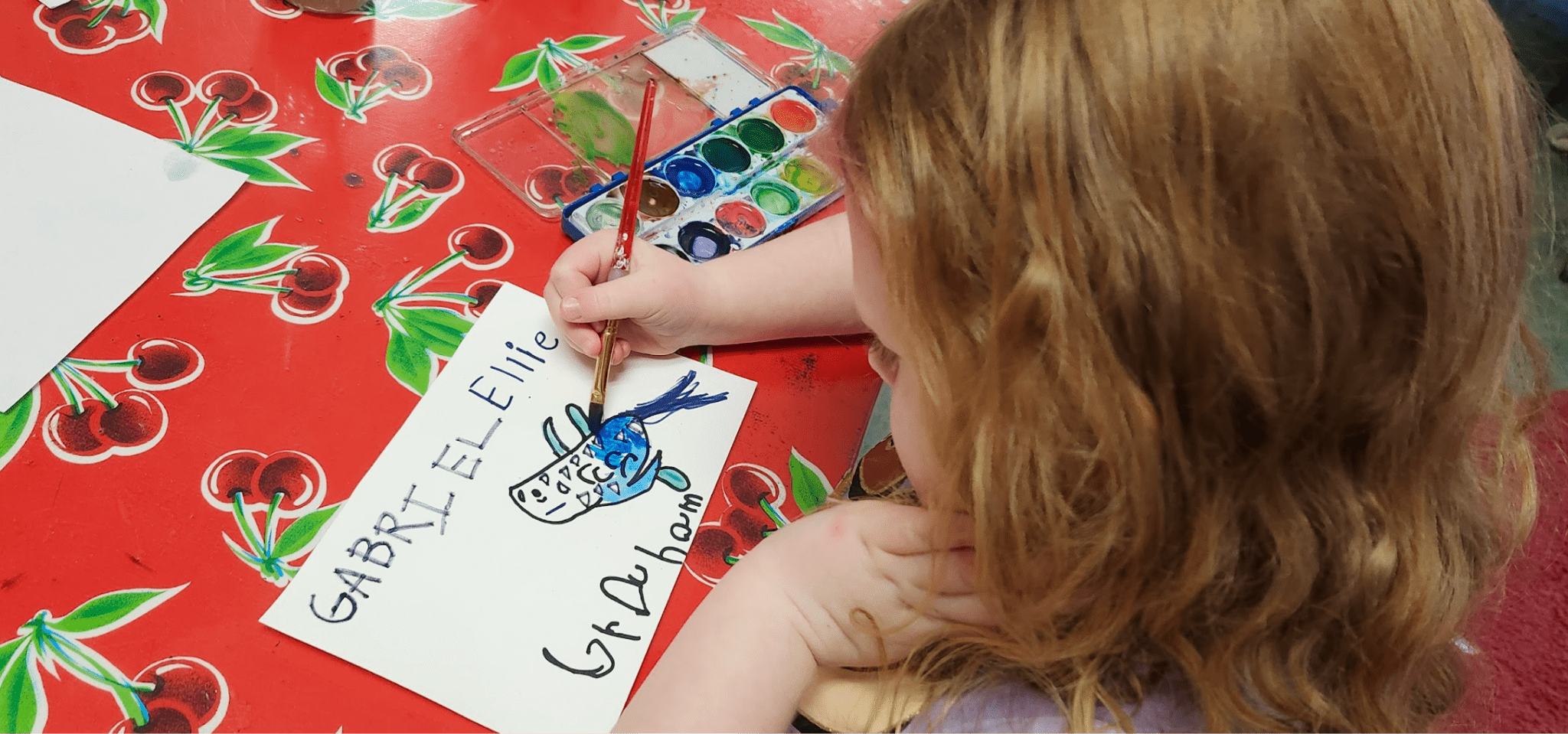
Sharing things we’ve been learning about oceans

This week in Math…
Ms. Kim’s group…
…in practice for our final 2 dimensional shape project, we practiced putting polygons together to make foxes and crocodiles. We also added sides to some quadrilaterals in order to make 5-sided pentagons, 6-sided hexagons, and 7-sided heptagons!
We also started making Fact Family Castles. The more we explore numbers, the more we find relationships between them! While the absorption of “facts” will help us compute, the process of looking for patterns will help us enormously when we begin to learn multiplication and division!

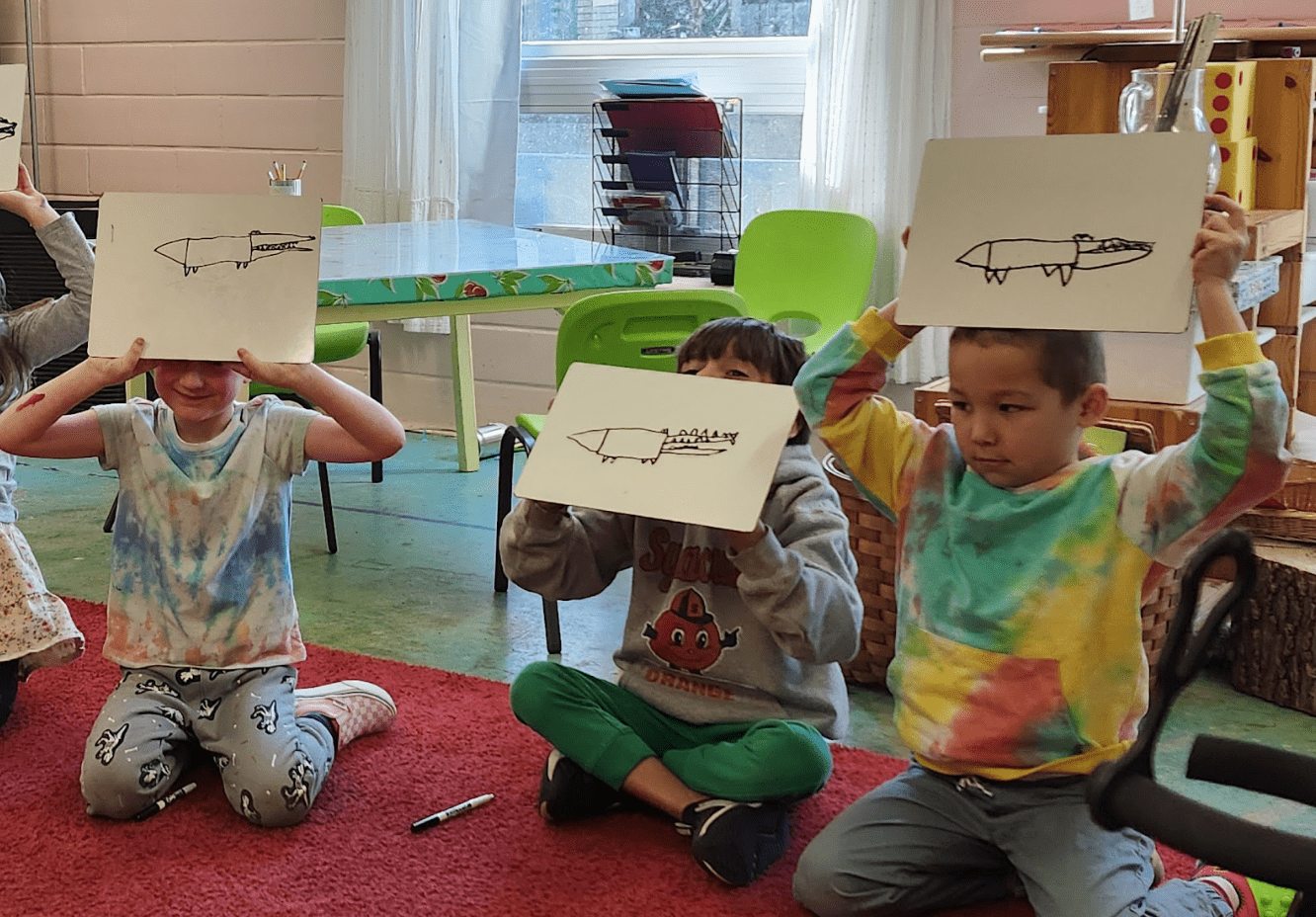
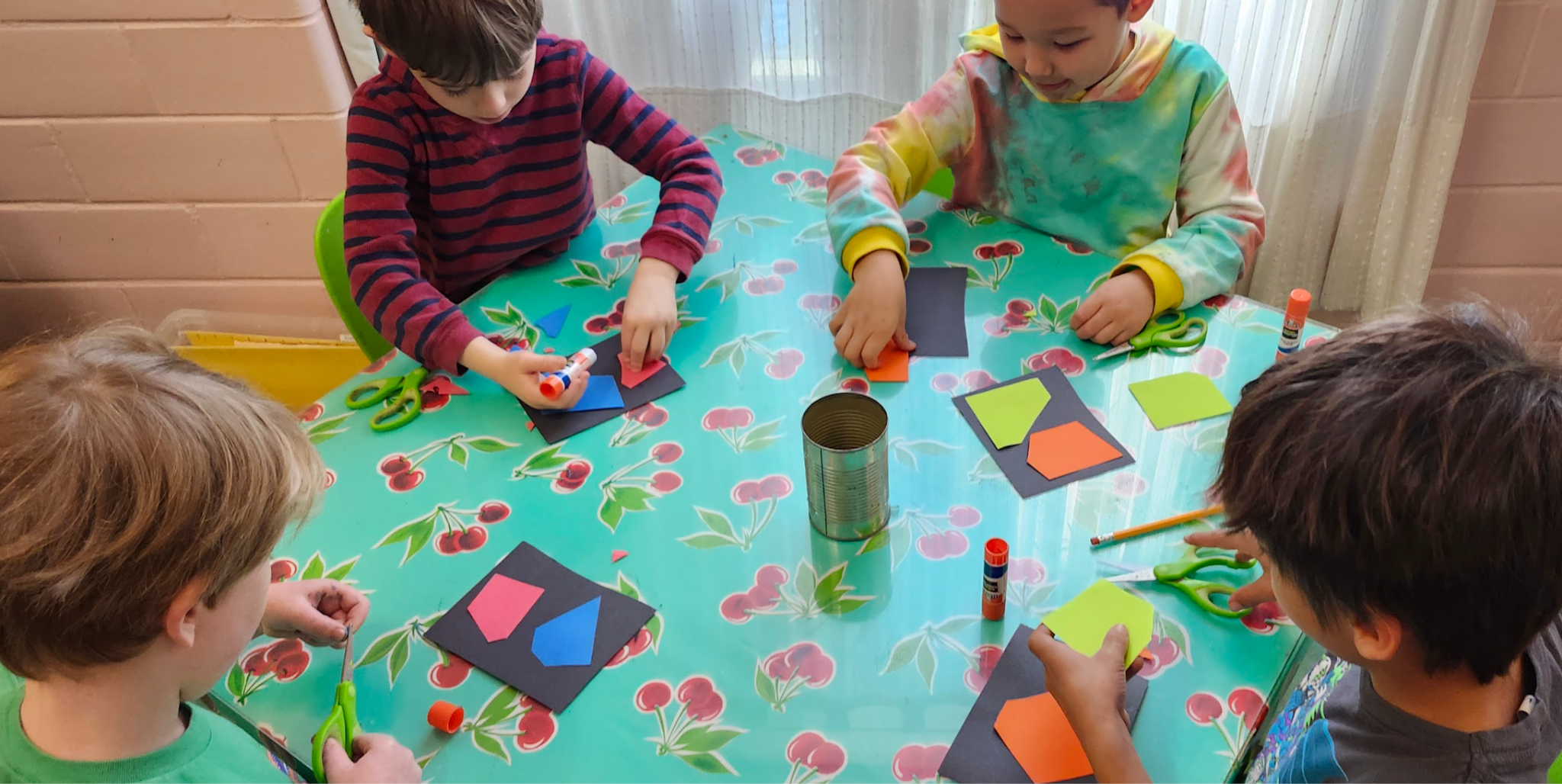
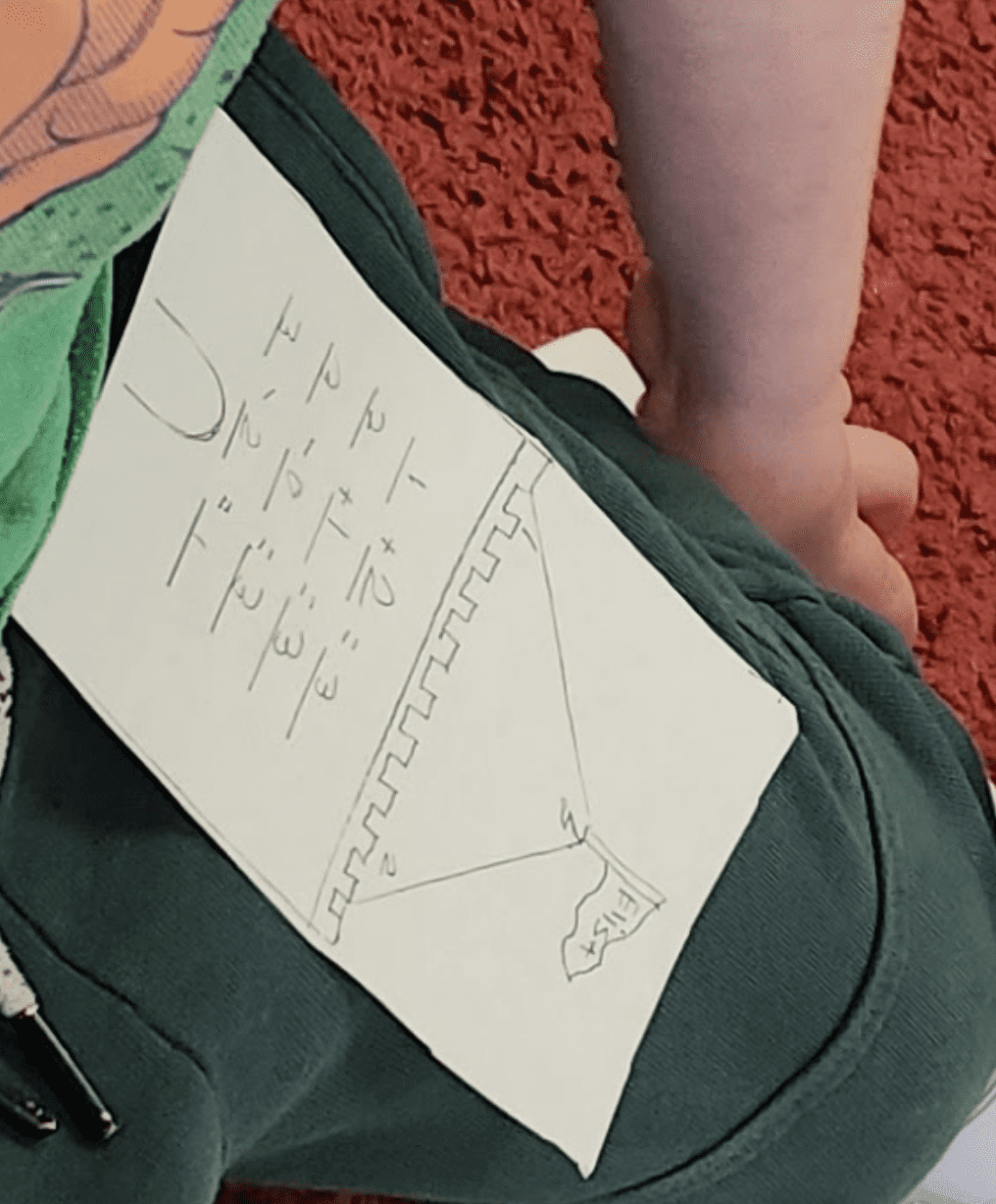
Ms. Eliza’s group…
This was the last week for our exploration of coins and their values. Alphas have learned so much about them and how to add and compare them. This has been a great way to practice counting by 2’s, 5’s and 10’s.

Seeing how many states we can find using quarters from Lucy’s quarter collection
We continue each week to work on other concepts including subtraction strategies, place value, adding and subtracting with larger numbers, etc.
This week in Language Arts…
Ms. Eliza’s group…
Our phonetic study this week has been focused on digraphs SH and TH. We work with the moveable alphabet each week to explore different spelling families – this week we worked on -ump and -ing. Our sight words for this week are PLAY and the word AND. Keep up the good work practicing these words at home. Alphas know that the more we practice our reading the stronger our skills become so keep reading 5-10 minutes a day!
We’ve been reading a fairy tale called The White Deer. It’s a long story and we’ll continue with it next week. As we go we make predictions. Prediction is a reading strategy that helps us to use our own experience to anticipate or connect with what might happen in a story. When we left off with The White Deer on Thursday we were predicting that Princess Faith (who is now a white deer) would be found and that maybe she could also talk even though she is now a deer…we’re eager to see what happens next especially to the liar Prickly.
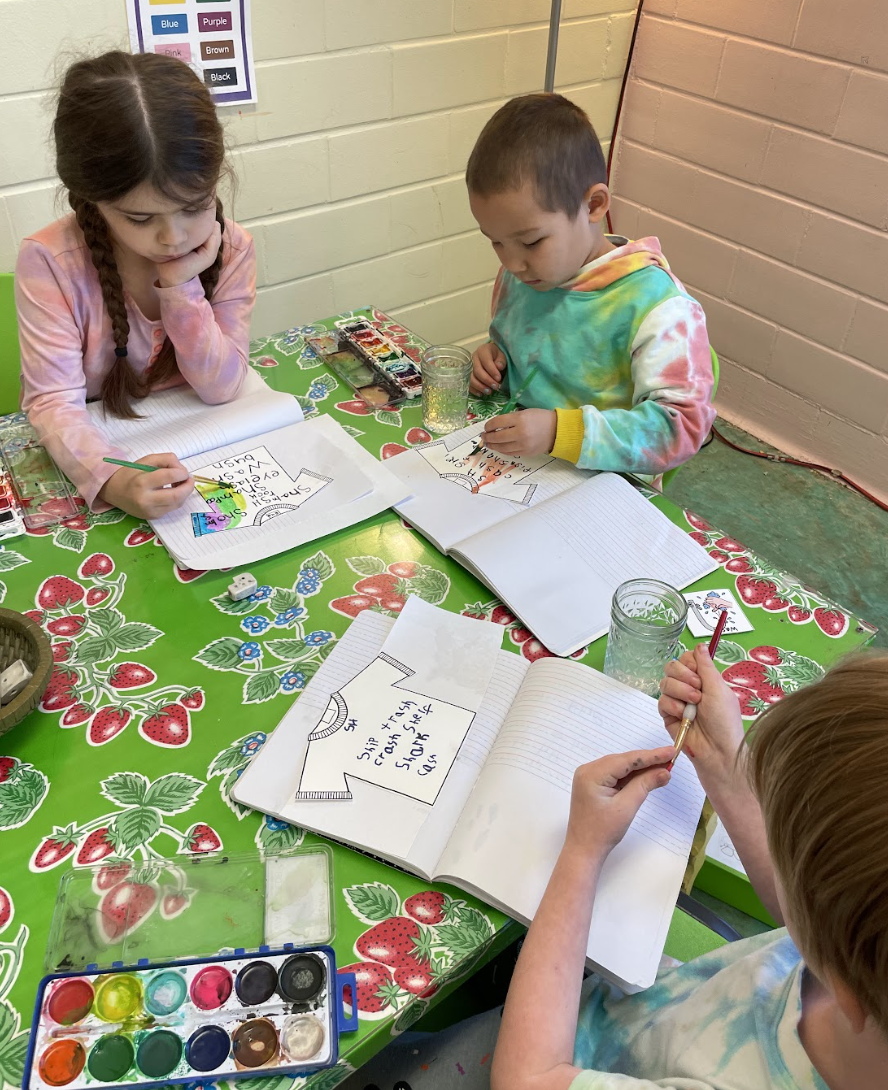
In poetry this week…writing the final draft of our Pineapple poem…
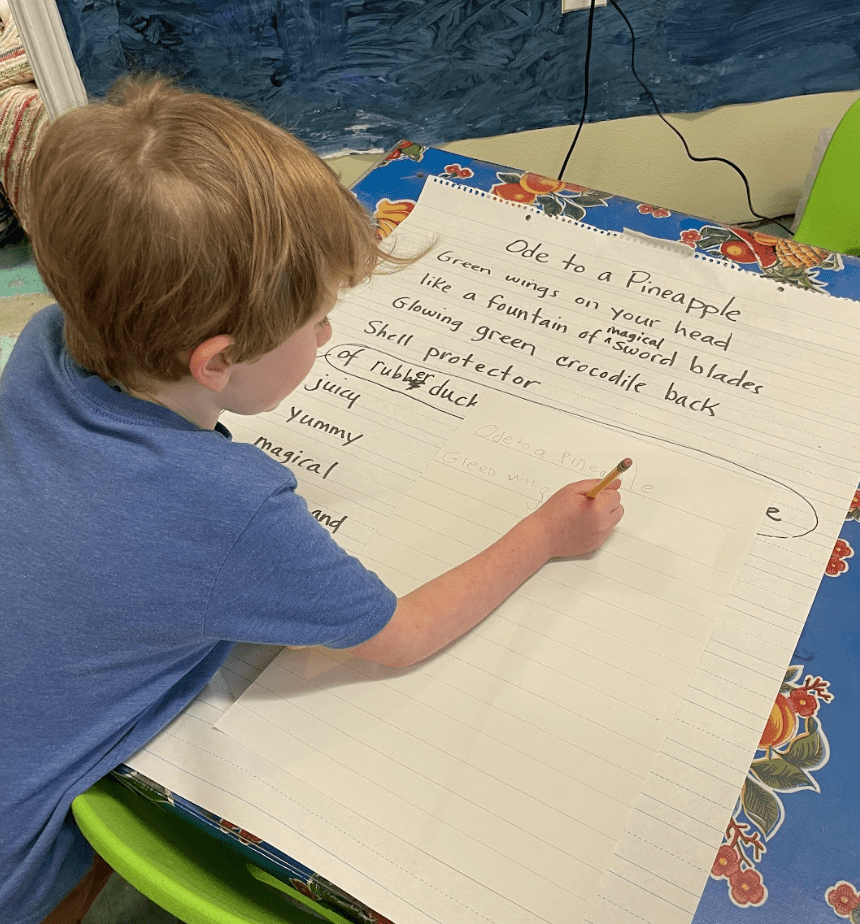
And beginning to brainstorm our next poems Never… things we never want to eat or do…
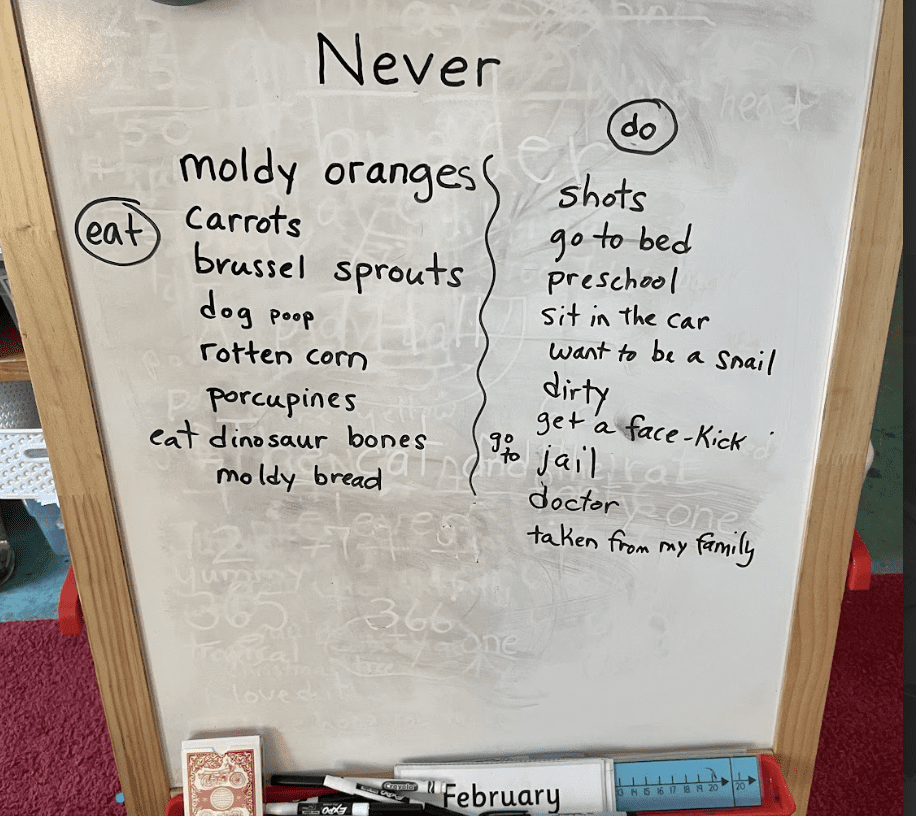
Ms. Kim’s group…
This week we started new reading groups to build our comprehension skills. We learned about “glued sounds” and how they can make some vowels (a, and i) sound a little different! We played noun and adjective “Hot Potato,” and learned that poets sometimes use form and structure in order to write their poetry. We wrote poems for Ms. Eliza on her birthday, and we read a book about the Japanese concept of Wabi Sabi, finding the beauty in imperfect things – like old buildings or possessions, nature, patterns that comfort us, like sunsets and the smell of toast…mmmm…
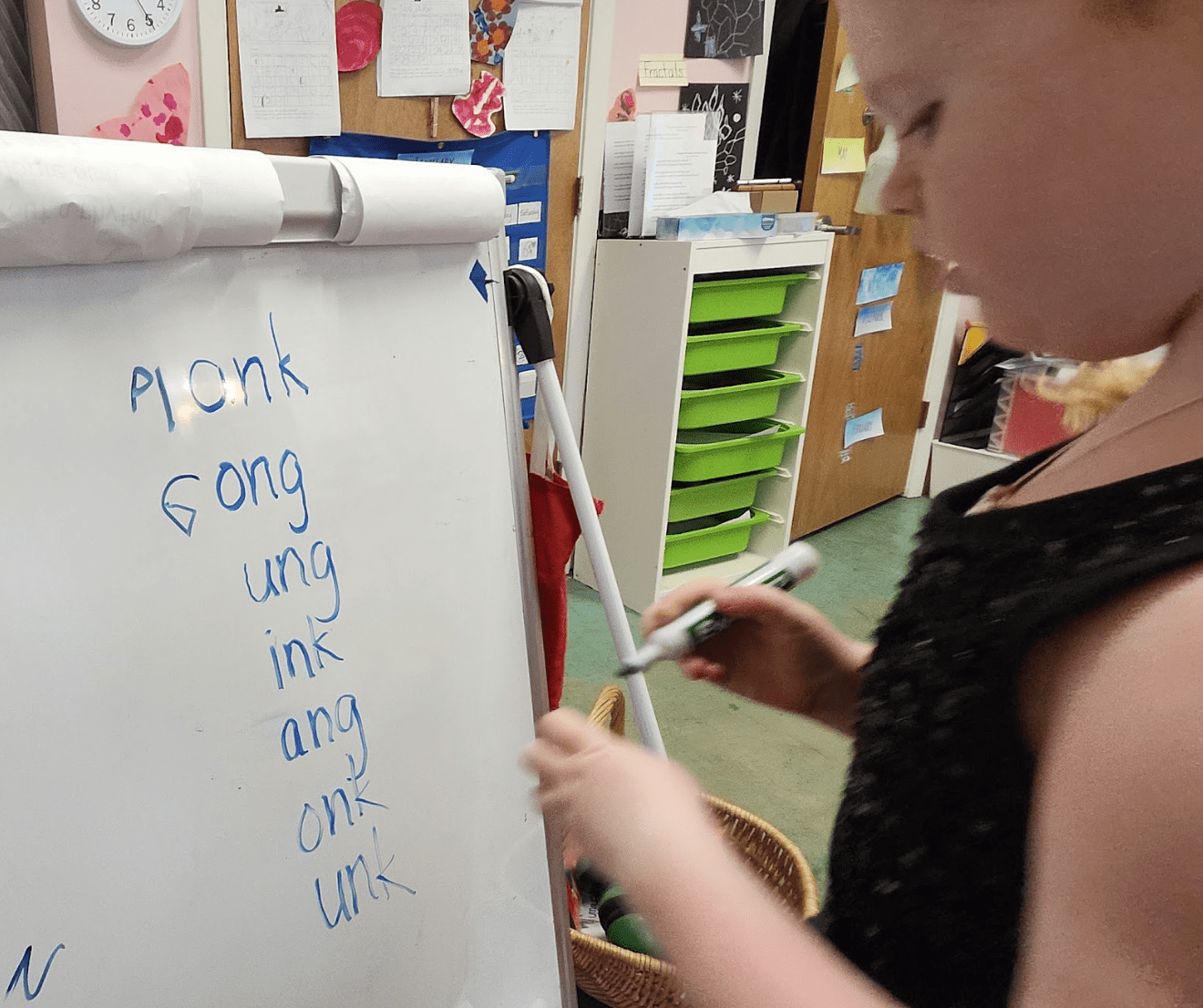
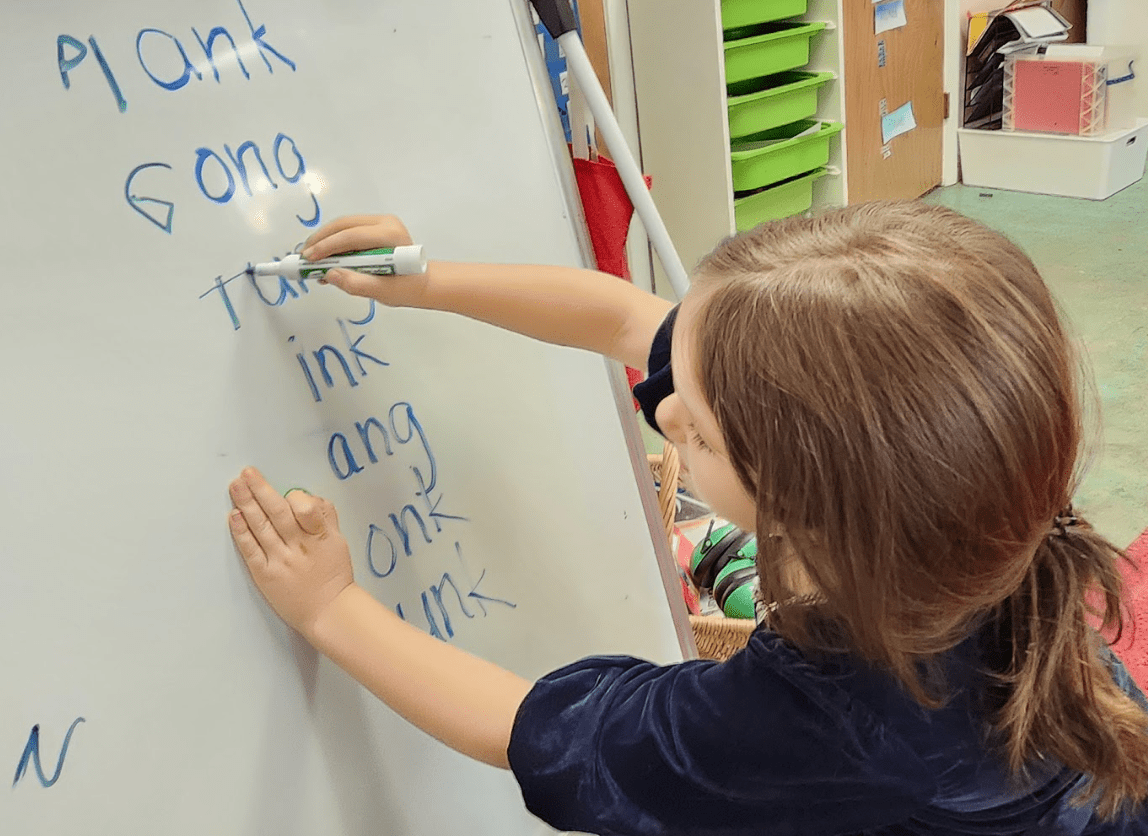
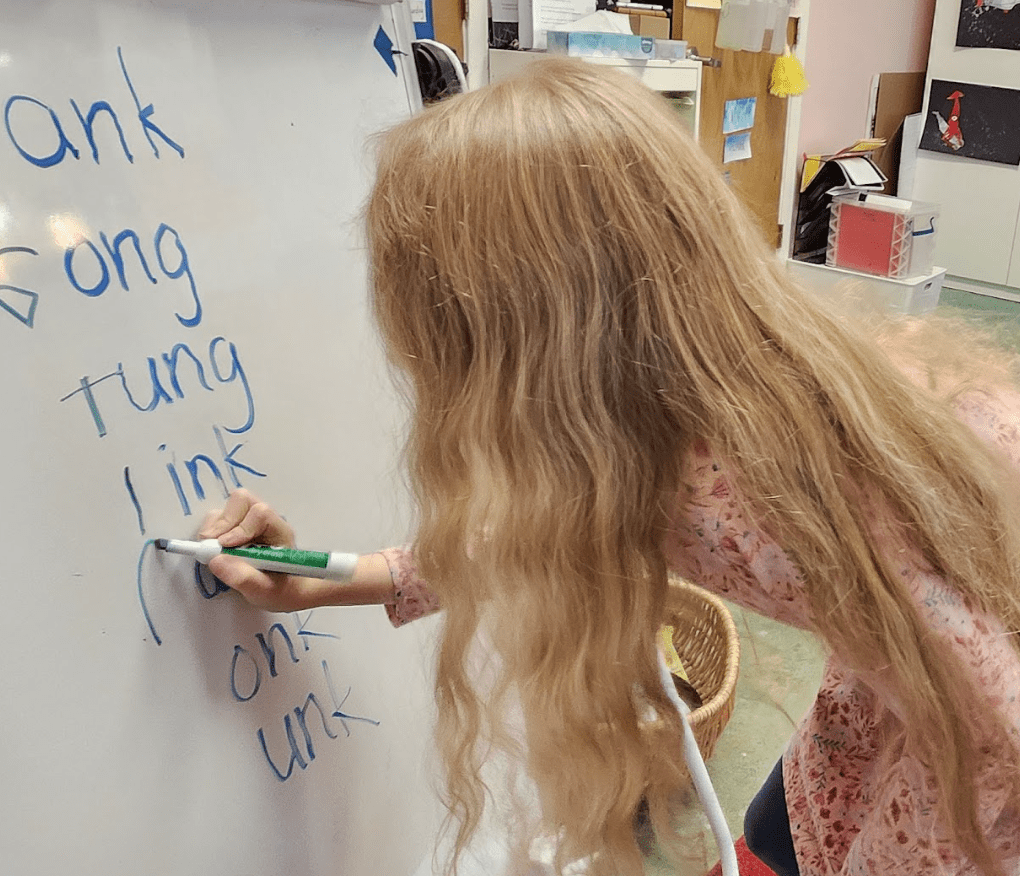

In other news…
This week Green Table was cookin’ with flour, salt, and water!
CRACKERS!
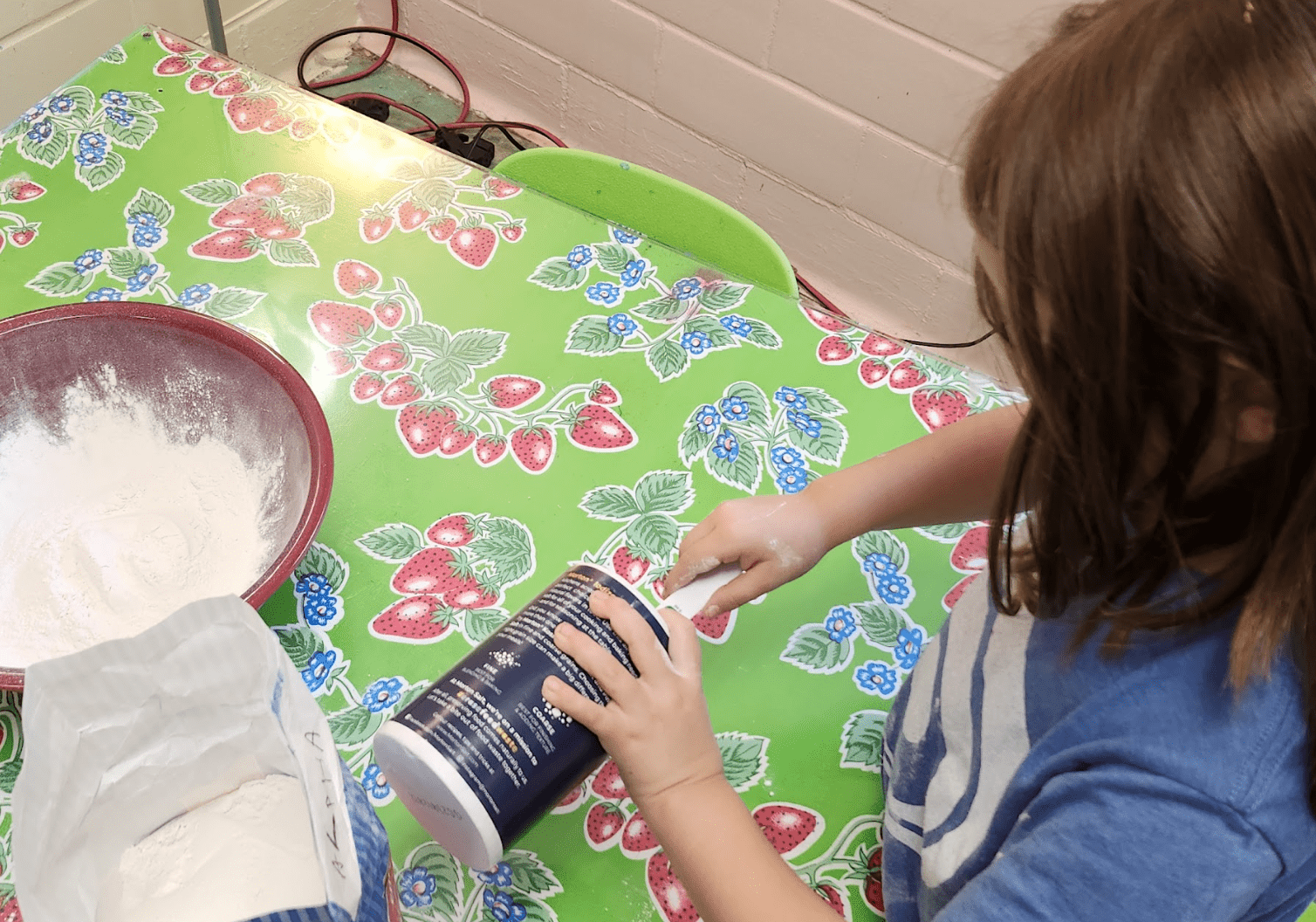
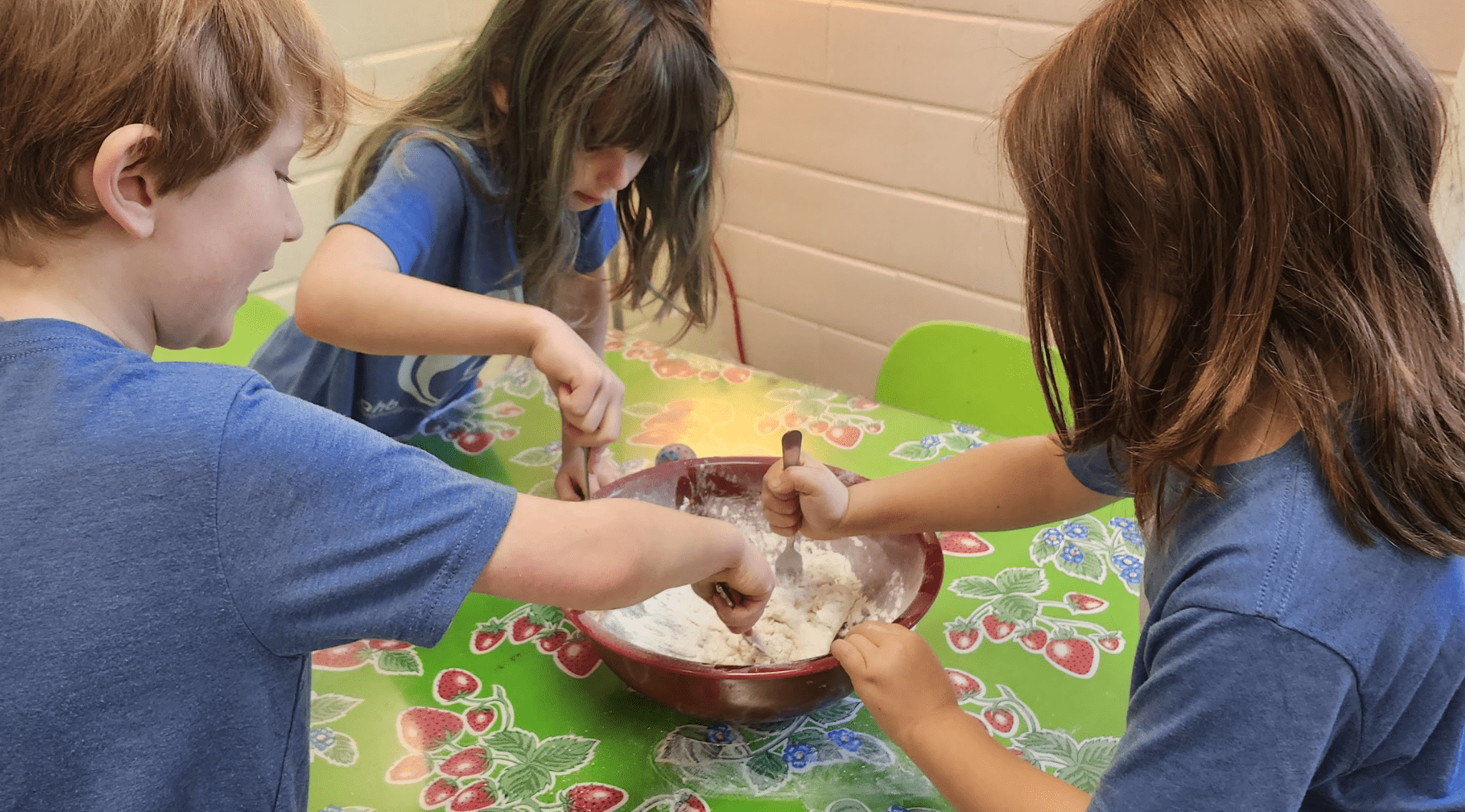
Measuring…mixing…
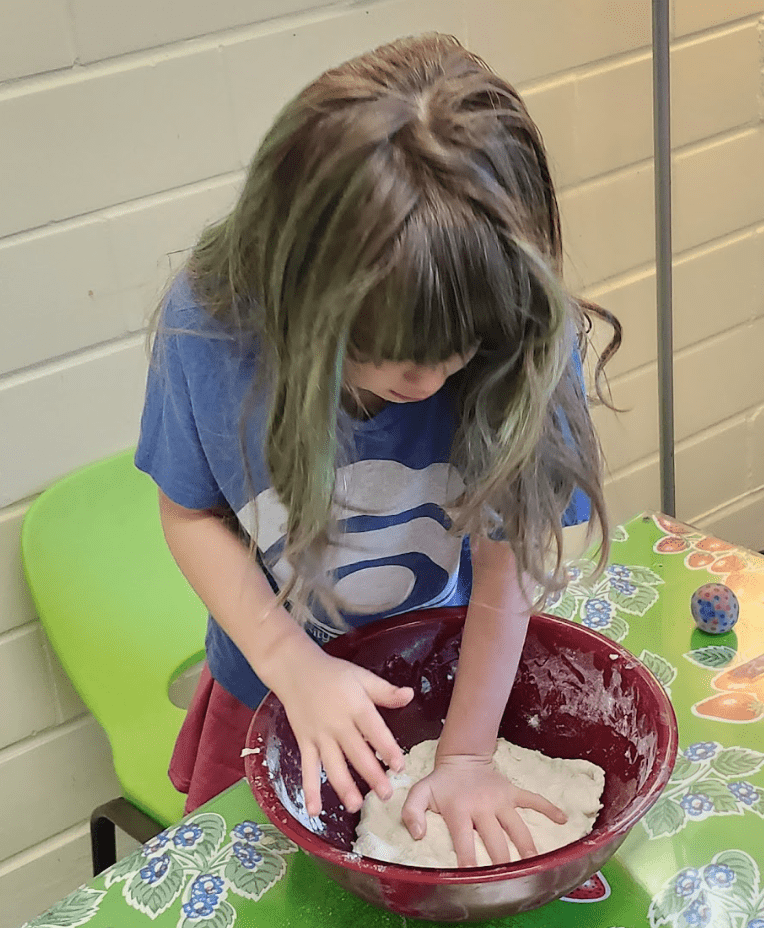
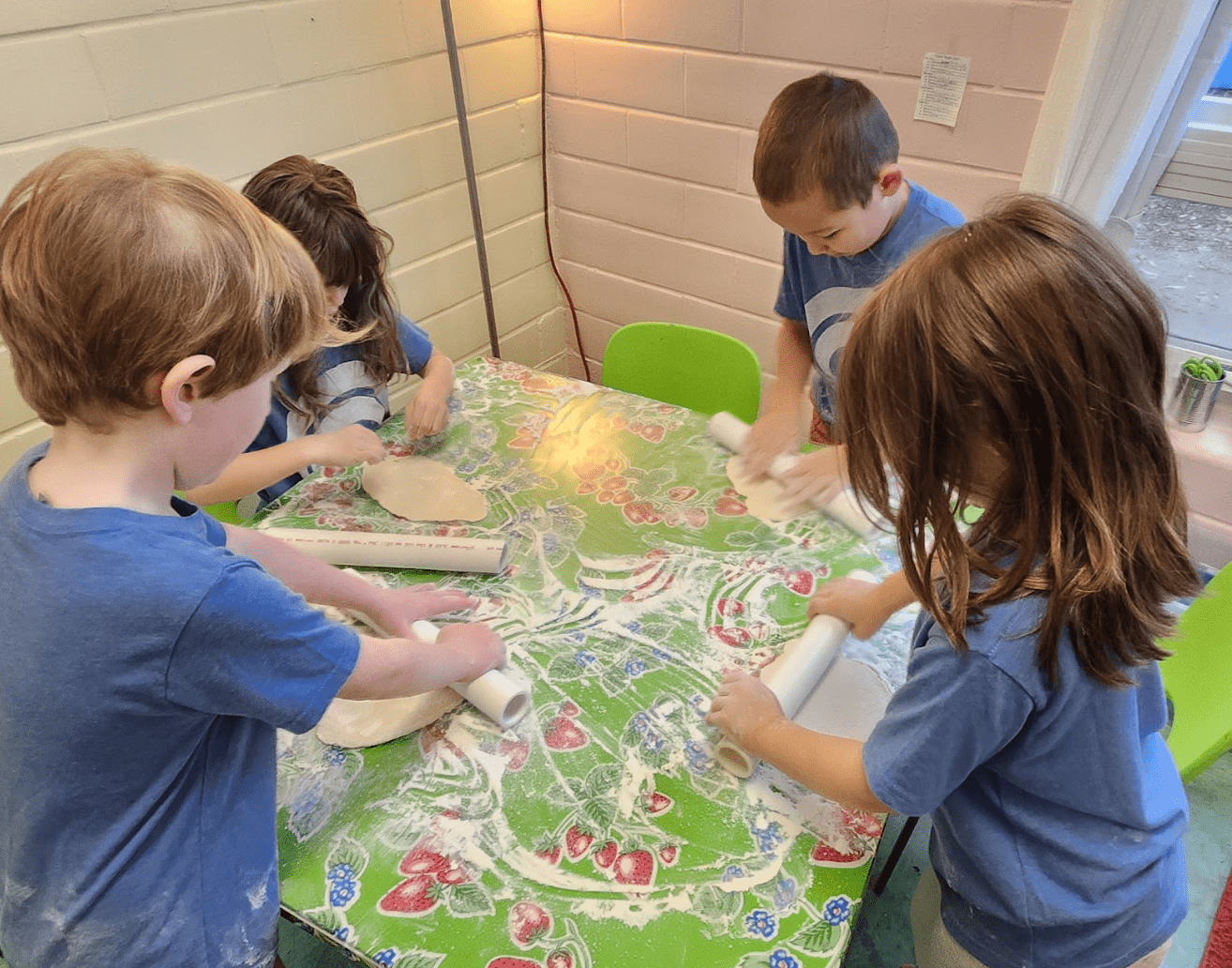
Kneading…rolling!
New games to play…Pictureaka! And Skippity

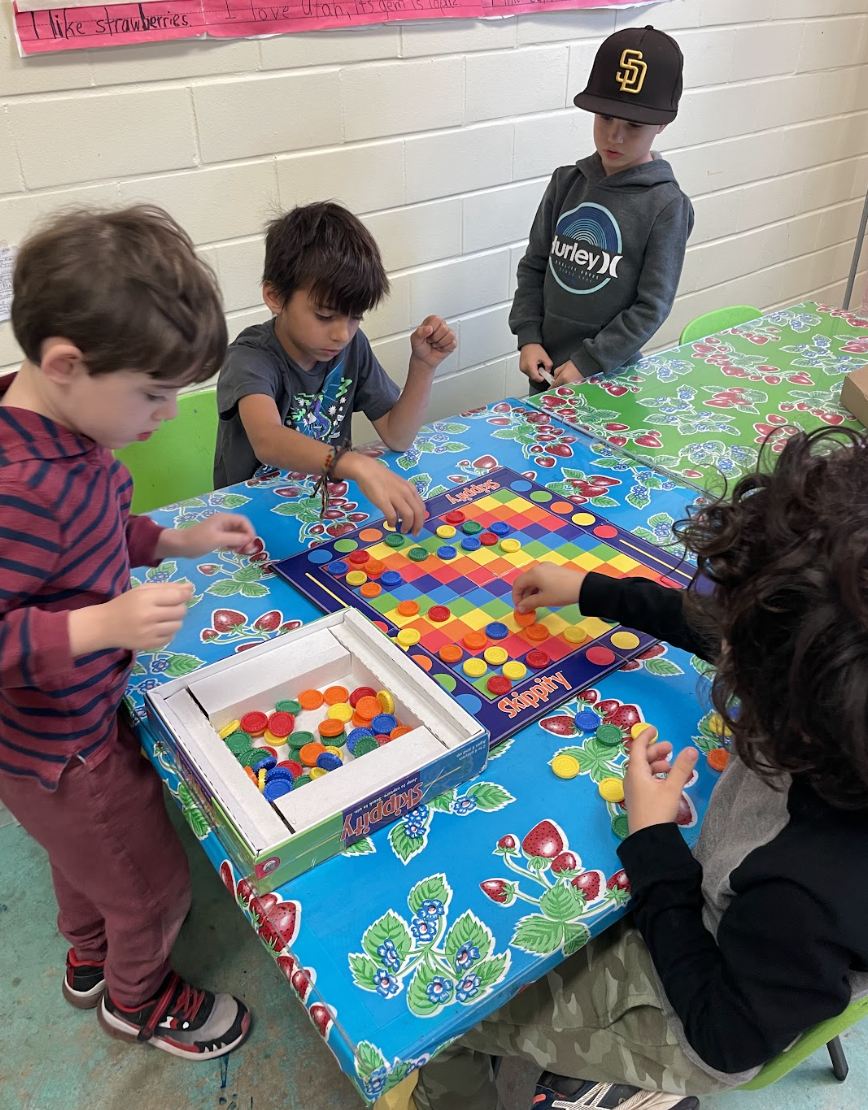
More penguins came to visit…
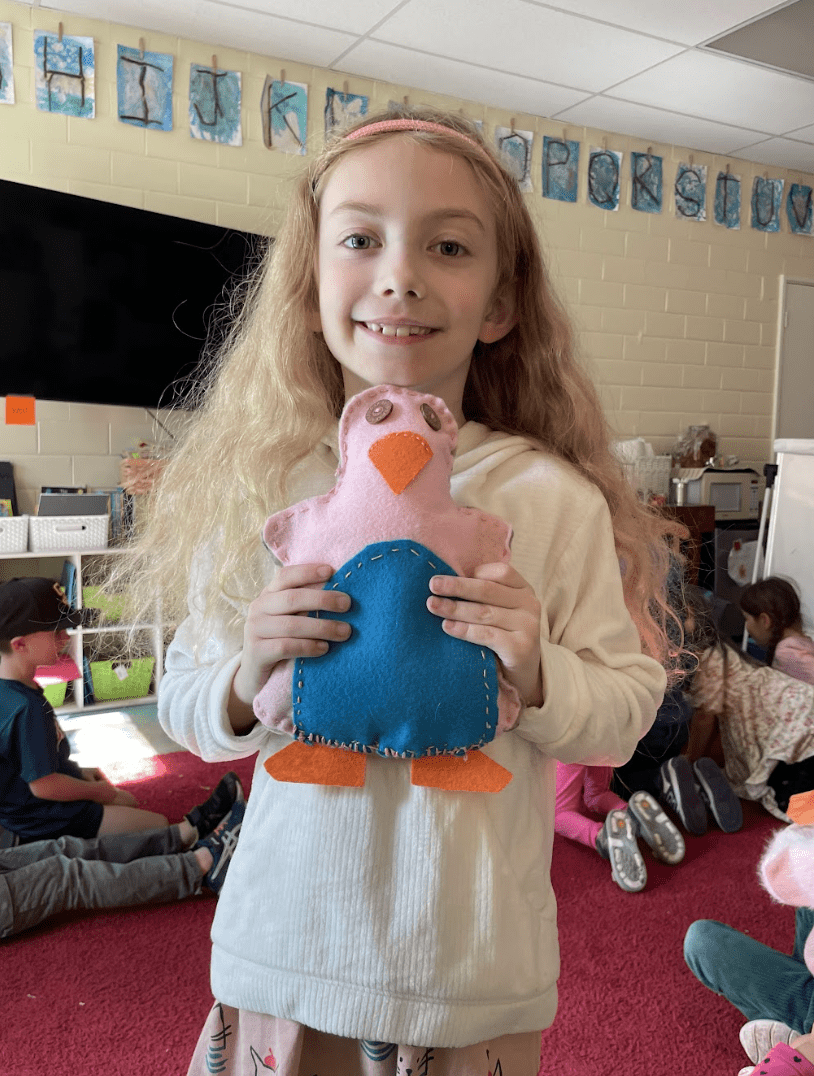
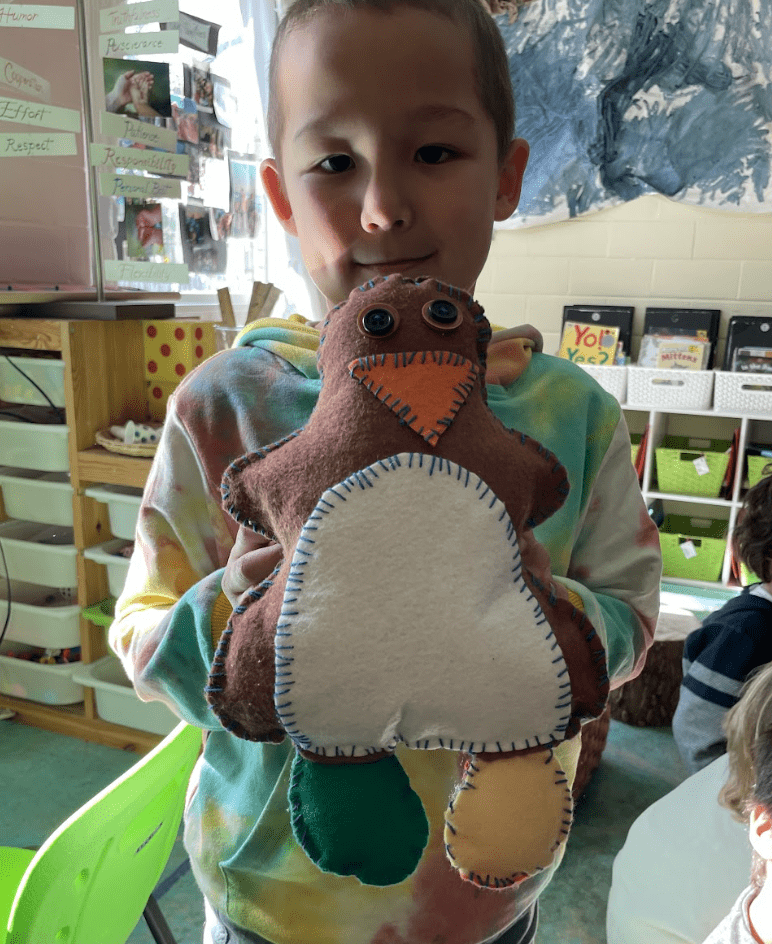
Birthdays!!!!!
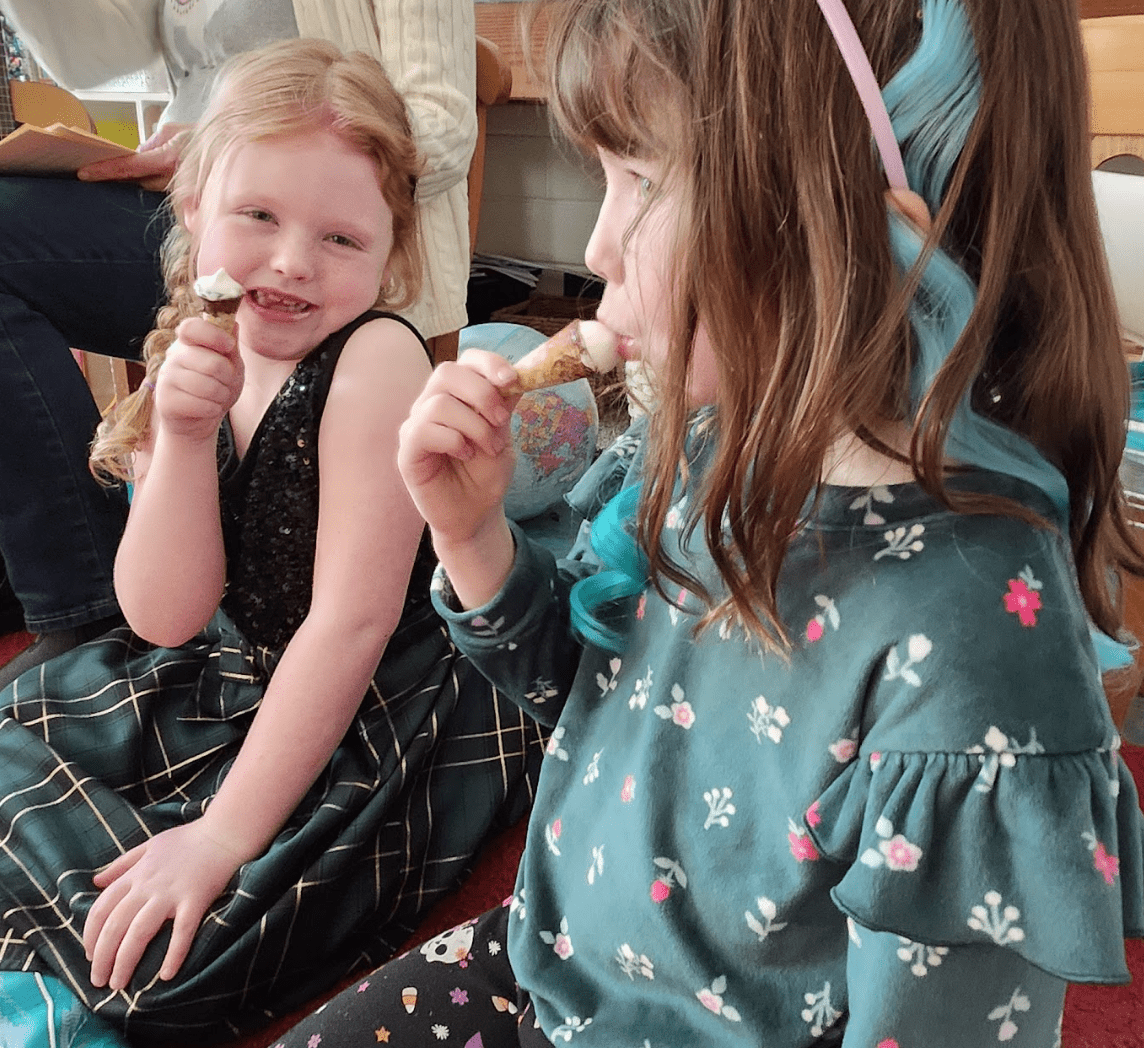
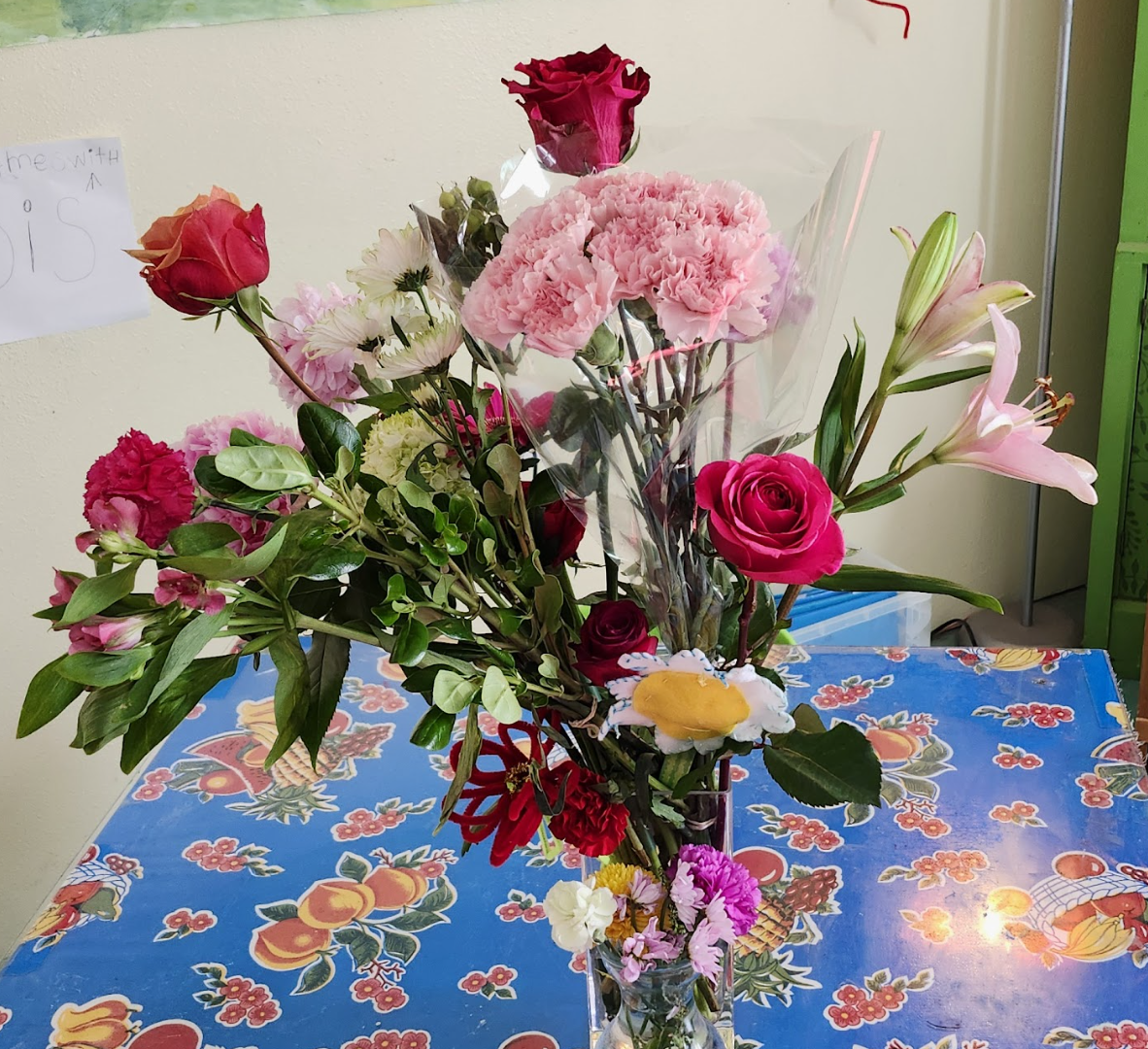
Washing up…
